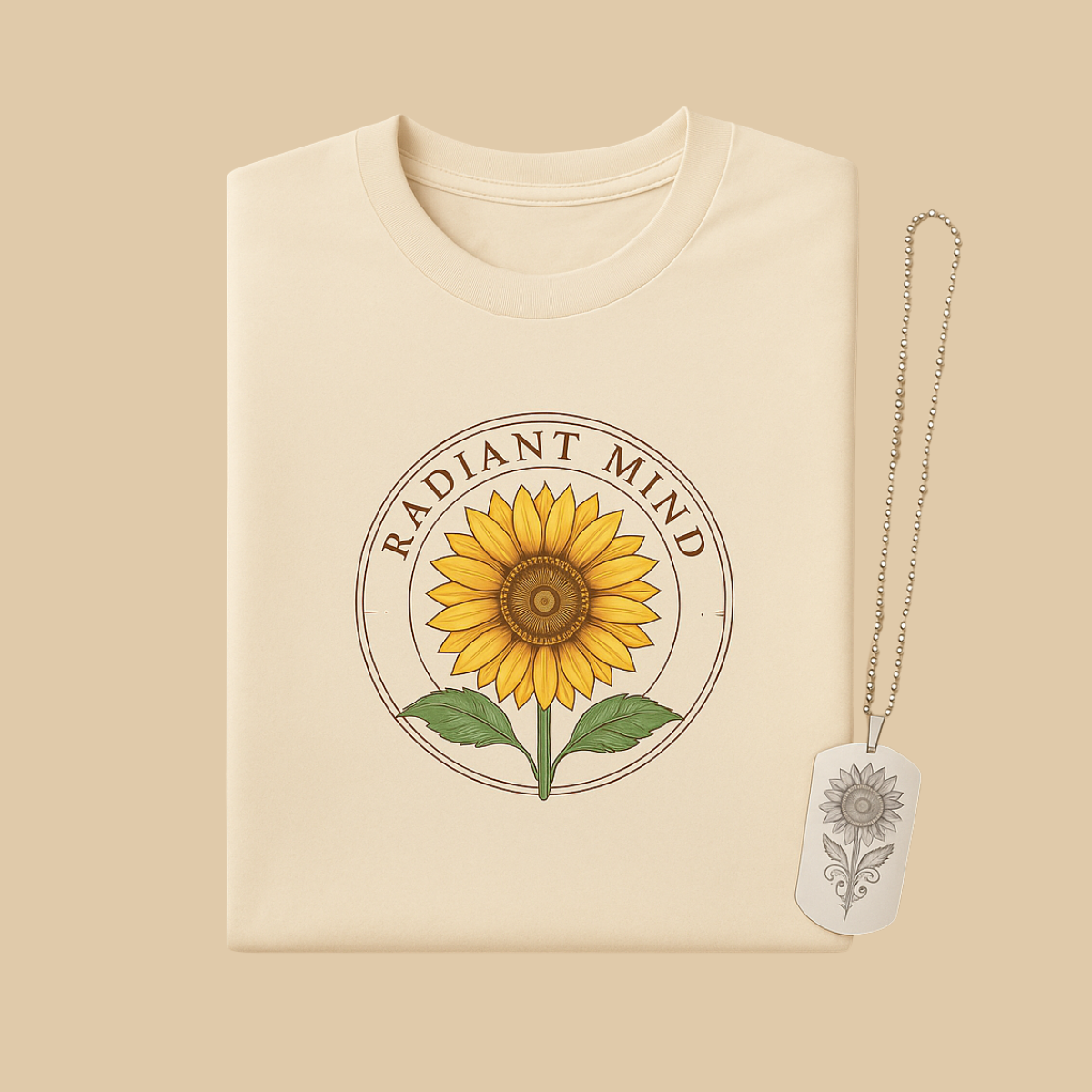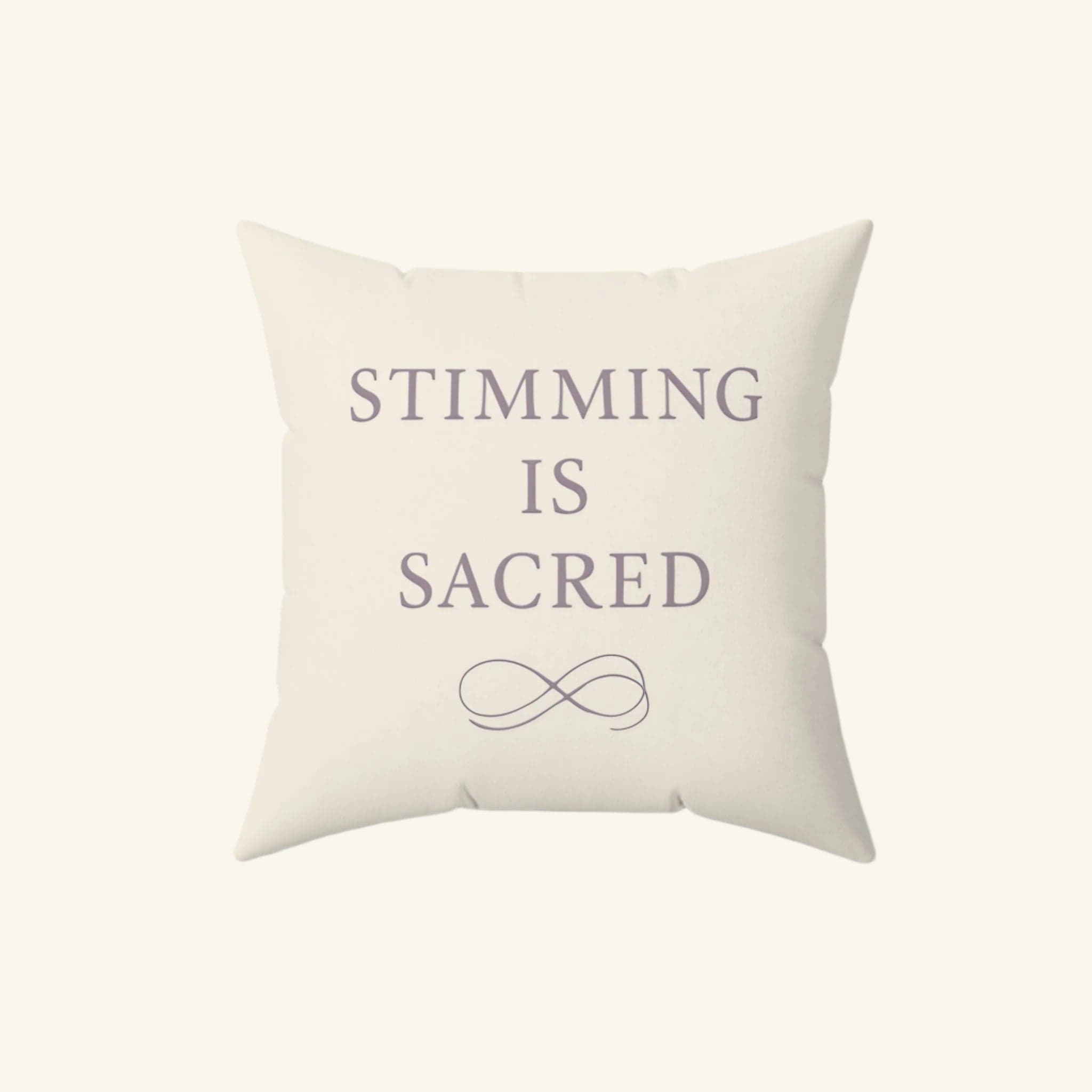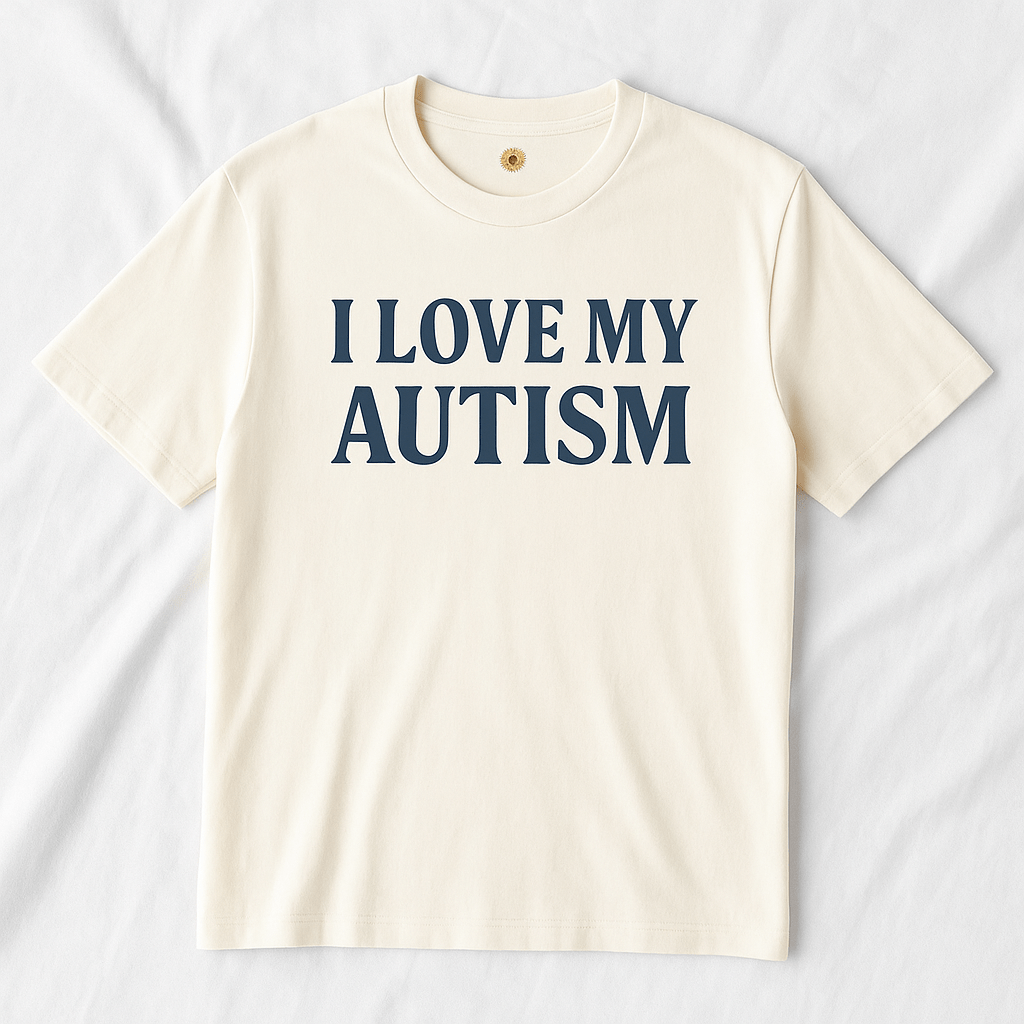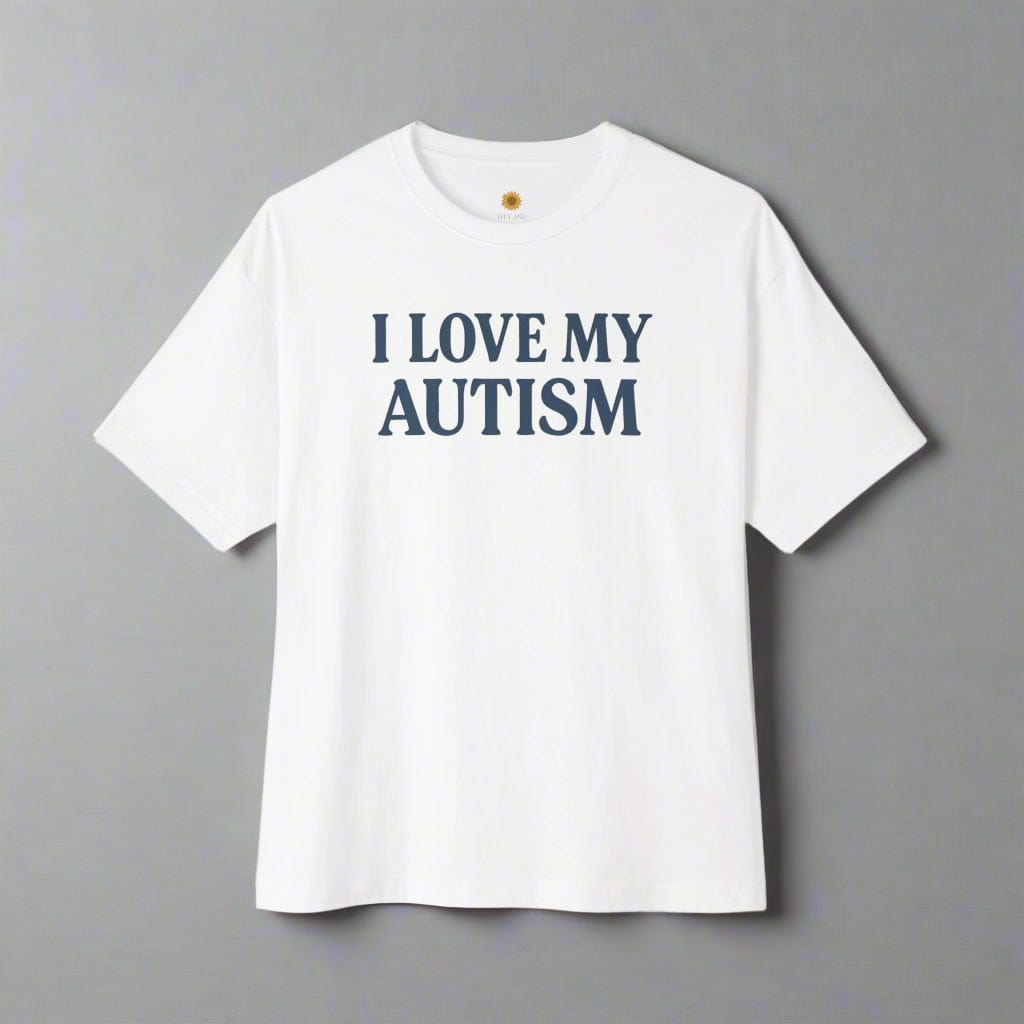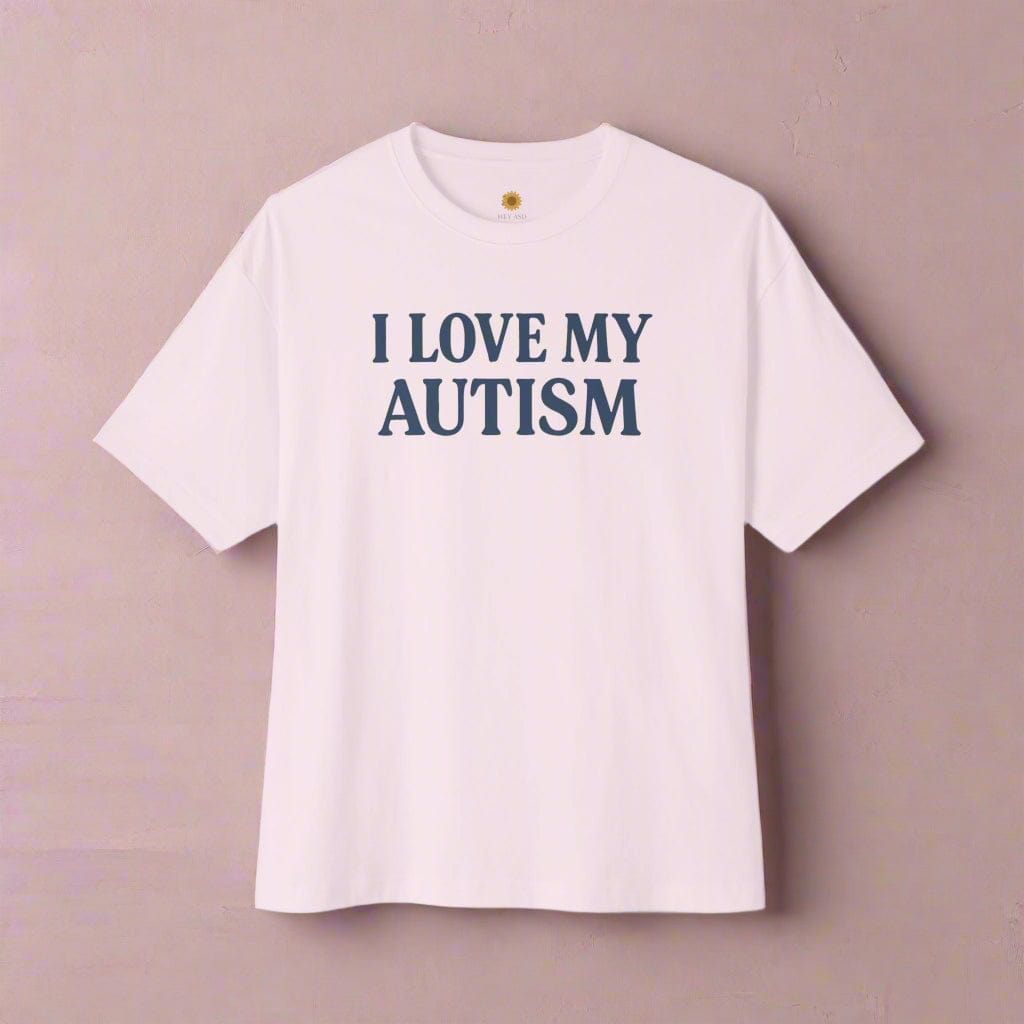What Is Autistic Joy? A Celebration of Being Authentically You

Written by the HeyASD Editorial Team
When people talk about autism, the conversation often centers on what’s difficult—communication, sensory challenges, or support needs. While these realities matter deeply, they’re only part of the story. The other side—often overlooked but profoundly life-giving—is autistic joy.
Autistic joy is not just about feeling happy; it’s a deep, full-body sense of alignment, comfort, and freedom that comes when autistic people are allowed to exist exactly as they are. It’s the quiet satisfaction of a familiar routine, the sparkle that comes from diving into a special interest, or the calm of feeling soft light on your skin without the need to perform or hide.
This guide explores what autistic joy really means—its origins, how it feels, and how to nurture it in everyday life. Whether you’re autistic yourself, a caregiver, or an ally, understanding this form of joy helps shift the narrative from “coping with autism” to celebrating the richness of autistic life.
What Is Autistic Joy? Meaning and Origins
Autistic joy is the pure, intense happiness that autistic people experience when they are free to be themselves without masking. It’s a feeling that can be sparked by a special interest, a comforting sensory experience, or a moment of deep understanding.
This concept gained visibility as autistic people began sharing their experiences online, reclaiming their identities and autistic traits. It represents a powerful shift away from viewing autism through a lens of deficits to celebrating it as a core part of who you are. The following sections explore this definition and its origins more deeply.
Defining Autistic Joy: A Feeling of Being Authentically You
At its heart, autistic joy is an all-encompassing, very intense feeling of joy and excitement. It’s the feeling that washes over you when you are completely absorbed in something you love, free from judgment or pressure to conform. This feeling of intense happiness can be so powerful that it radiates through your whole body.
Many autistic people describe this as sparks traveling through them or a flood of warmth. In these moments, the outside world can seem to melt away, leaving only the pure, focused joy. It’s a feeling that often needs a physical outlet, which is why it's so closely linked with stimming.
This is the happiness that comes from unmasking—the freedom of not having to suppress your natural reactions. As a complete human being, your authentic expression of emotion is valid and beautiful.
How the Concept Emerged: From Stigma to Pride
The term "autistic joy" grew popular on social media platforms, where the #AutisticJoy hashtag became a space for celebration. It emerged from the neurodiversity movement, as autistic people pushed back against outdated autism research and narratives that focused only on challenges. It was a way to reclaim their stories and define their own experiences.
For a long time, many autistic people were told they were "too much" or were shamed for expressing excitement. This criticism forces people to hide their true selves. Celebrating autistic joy is a direct response to that stigma.
It represents a move toward a neuroaffirming perspective, where autistic ways of being are not seen as problems to be fixed but as natural variations of the human experience. It’s a declaration of pride in the things that make you, you.
The Unique Nature of Autistic Joy
While everyone experiences happiness, autistic joy often has a unique quality. It's not just a fleeting emotion but can be a profound, full-body experience that is deeply personal and internally driven. Many autistic people report that their joy feels different from what they observe in non-autistic people.
This happiness is often tied to autistic ways of thinking and sensing the world. Understanding these differences is key to appreciating the profound moments of happiness that are a core part of the autistic experience.
How Autistic Joy Differs from Neurotypical Happiness
Unlike forms of happiness that might depend on social validation or external achievements, autistic joy is often deeply internal. It’s a feeling that autistic people experience in their entire body, like "sparks igniting" them. It doesn't need an audience to be valid.
This joy can be so consuming that it absorbs all of your focus, making it feel more intense than what others might describe. While neurotypical people might feel happy about something and move on, an autistic person might live inside that joyful feeling for a longer time.
Because it doesn't always align with typical social norms or diagnostic criteria, it has often been misunderstood. Sadly, this has led to criticism or strange looks, rather than celebration. This joy is not a sign of any mental health conditions; it is a pure expression of self.
Autistic Joy Meaning: Sensory, Solitary, and Embodied Experiences
The meaning of autistic joy is often found in experiences that are sensory, solitary, and embodied. It can be the quiet bliss of being alone in nature, surrounded by calm, or the satisfaction of your mind making a new connection. It’s a joy that engages your entire being.
This expression of joy is physical. The feeling is often so intense that it fills your whole body, creating a need to move, flap, or make sounds to release the energy. This is stimming, and it's a natural and healthy part of the experience, not something to be suppressed.
Instead of being overwhelming like sensory overload, these are moments of sensory pleasure—the beauty of colors, the feeling of a soft texture, or the rhythm of a favorite song. It’s about finding happiness on your own terms.
Everyday Examples of Autistic Joy
Autistic joy isn't something that happens only on special occasions. It can be found in small, everyday moments for both autistic children and autistic adults. It’s in the comfort of a familiar routine, the thrill of a new discovery, or the peace of a quiet space.
These moments are personal and unique to each individual. Below are some common examples of activities and real-life stories that show what this beautiful and authentic happiness can look like in day-to-day life.
Activities That Spark Autistic Joy—Special Interests, Stimming, and Routines
Many activities rooted in autistic ways of being are sources of profound joy. A special interest, for example, isn't just a hobby; it’s a passion that provides energy, happiness, and a sense of purpose.
Engaging with these interests, stimming freely, and finding comfort in routines are all ways to connect with your authentic self. These autistic behaviors are not things to be hidden; they are pathways to happiness.
Common sources of autistic joy include:
-
Getting completely lost in a special interest, like researching a topic for hours.
-
Listening to the same song on a loop, feeling the music in your whole body.
-
Stimming freely, like flapping your hands or dancing when excited.
-
Arranging objects in a satisfying pattern.
-
The comfort of a predictable routine.
-
Wearing a soft, weighted sensory blanket or a favorite cozy autism hoodie.
-
Finding the perfect words to express a thought.
Stories and Quotes: Real-Life Moments of Autistic Joy
The real-life moments that autistic people experience showcase the beauty of this feeling. Imagine being alone in the middle of a lake, with just the water and the sky. For many, that solitude is pure bliss. Or picture dancing with joy in an empty office at 2 a.m. because you successfully analyzed a set of data.
These profound moments of happiness often come from deep focus and a connection with one's passions. The joy of finding just the right words when writing or the thrill of learning something new are powerful examples.
As advocate Chloé Hayden says, autistic joy is "normal...shouldn’t have to be hidden...not shameful...so important." This celebration of autistic joy validates these experiences, reminding us they are a natural and wonderful part of being human.
Why Celebrating Autistic Joy Matters
Celebrating autistic joy is more than just focusing on the positive. It is a radical act of self-acceptance and a powerful statement of autistic pride. It helps build a strong autistic identity by validating experiences that have often been misunderstood or dismissed.
By embracing this joy, you challenge outdated narratives and support the broader neurodiversity movement. This celebration is about more than feeling good; it's about claiming your space and honoring your authentic self, including the acceptance of stimming.
Building Autistic Identity Through Joy and Pride
Your autistic identity is something to be celebrated, and joy is a central part of that. For a long time, autistic people have been told their natural expressions of happiness are wrong. Embracing your joy is a way to heal from those messages and build confidence in who you are.
When you allow yourself to feel and express joy authentically—whether through stimming, indulging in a special interest like the character Ariel from "The Little Mermaid," or just being yourself—you affirm that your way of being is valid. This builds immense joy and pride.
This is especially powerful for an autistic parent, who can model self-acceptance for their children. Showing your pride, perhaps with autism t-shirts or autism jewelry, sends a clear message that being autistic is something to be celebrated, not hidden.
Connection to Autism Acceptance and Neurodiversity Celebration
Celebrating autistic joy is a key part of the shift from awareness to true autism acceptance. It moves the conversation beyond just recognizing that the autism spectrum exists and toward valuing the contributions and experiences of autistic people. It is a cornerstone of neurodiversity celebration.
This act directly challenges the view of autism as a "disorder" that needs fixing. Instead, it supports a neuroaffirming perspective that sees autism as a natural and valuable form of human diversity. When you celebrate your joy, you are advocating for a world that accepts all kinds of minds.
By sharing these moments, the community helps educate others and fosters greater understanding. It shows that a fulfilling life doesn't have to look one specific way and that joy is a universal human right.
Cultivating Autistic Joy in Daily Life
You don't have to wait for autistic joy to find you; you can actively cultivate it. Making small, intentional changes in your daily life can create more opportunities for happiness and authenticity to flourish. It’s about creating an environment where you feel safe and free to be yourself.
The following sections offer practical tips and activities for nurturing joy, both for yourself and with the support of family and friends. These ideas are designed to be gentle, low-pressure ways to reconnect with what makes you happy.
Nurturing Joy for Yourself: Practical Tips
As an autistic adult, finding ways to experience emotions on your own terms is crucial for well-being. Cultivating joy is an act of self-care, especially if you are dealing with late-diagnosed autism or recovering from autistic burnout. These practical tips can help you reconnect with your authentic self.
Start by noticing the small things that make you feel good. Is it the texture of a specific fabric, the sound of rain, or the satisfaction of organizing your bookshelf? Pay attention to those moments and make more space for them.
Here are some ideas to try:
-
Create a sensory-safe space in your home with things you love, like soft lighting or a favorite autism hat.
-
Schedule time for your special interests without guilt.
-
Practice "unmasking moments" by allowing yourself to stim or be quiet when you need to.
-
Surround yourself with people who accept and celebrate you.
-
Reduce overstimulation by planning for rest and quiet time.
-
Explore new interests that spark your curiosity.
How Families and Friends Can Encourage Autistic Joy
Support from family and close relationships is incredibly powerful. If you want to encourage autistic joy in a loved one, the goal is to create an environment of acceptance and understanding. It starts with listening and letting go of expectations about how they "should" feel or act.
Instead of telling them to "calm down" when they're excited, share in their happiness. Show interest in their passions, even if you don't fully understand them. Your support can make a world of difference in their ability to be their true selves.
Here are ways you can help:
-
Validate their feelings and expressions of joy.
-
Help create sensory-friendly environments.
-
Never shame them for stimming or their special interests.
-
Ask them what brings them joy and help make space for it.
-
Celebrate their unique way of seeing the world.
-
Learn about autism from autistic creators and advocates.
The Psychology and Science Behind Autistic Joy
The concept of autistic joy is not just a social movement; it's also grounded in psychology. Experiencing authentic joy has a significant positive impact on mental health and can be a powerful tool for self-regulation and healing.
Recent scientific insights are beginning to catch up with what autistic people have known for a long time. Researchers are now exploring how these unique experiences of happiness contribute to well-being, challenging old, deficit-focused views of autism.
The Role of Joy in Mental Health and Well-Being
Experiencing authentic joy is essential for mental health. For autistic people who often face pressure to mask, moments of genuine happiness can be a powerful antidote to stress, anxiety, and autistic burnout. Joy acts as a natural nervous system regulator.
When you allow yourself to engage in activities that bring you joy, you are reinforcing your sense of self and building resilience. This is particularly important because the autistic people experience of navigating a world not designed for them can be exhausting. Access to good mental health services is key.
Embracing joy is a form of self-care. It counters the negative effects of societal prejudice and helps you build a life that feels good and sustainable.
|
Suppressing Joy (Masking) |
Embracing Joy (Authenticity) |
|---|---|
|
Leads to exhaustion and burnout. |
Boosts energy and resilience. |
|
Weakens sense of identity. |
Strengthens authentic self-concept. |
|
Increases anxiety and stress. |
Regulates the nervous system. |
|
Creates feelings of isolation. |
Fosters self-acceptance and pride. |
Scientific Insights and Therapist Perspectives
Scientific insights into autistic joy are growing, largely thanks to research that centers autistic voices. A key study by Elliot Wassell surveyed autistic adults and found that 94% "actively enjoy aspects of being autistic." This directly challenges the idea that autism is defined by struggle.
The study identified that joy often comes from deep immersion in activities, sensory pleasures, and passionate interests. These findings support a neuroaffirming perspective, suggesting that therapists and professionals should focus on creating supportive environments rather than trying to "normalize" autistic behaviors.
From a therapist's view, this means helping autistic clients identify their unique sources of joy and build a life around them. Instead of treating autism spectrum as a problem, the goal is to support the individual in flourishing as their authentic self.
Autistic Joy in Online and Offline Communities
While autistic joy can be a solitary experience, sharing it with others is a powerful way to build community. Online spaces, particularly on social media, have become vital hubs for autistic people to connect and celebrate their shared experiences. These social connections validate individual feelings and reduce isolation.
From online forums to local meetups and support groups, finding your people can transform a personal feeling of happiness into a collective celebration of autistic identity. This sense of belonging is a source of joy in itself.
Sharing and Celebrating Joy Together
When you share a moment of joy with someone who "gets it," the feeling is amplified. For many autistic people, discovering that others also experience emotions in a similar, intense way is incredibly validating. It counters the loneliness that can come from feeling different.
These shared social connections are fundamental to building a positive identity. Seeing someone else flap their hands with excitement or talk passionately about their interest helps normalize these behaviors. It transforms what might have been a source of shame into a point of connection.
This is how autistic lives are enriched and community is built. It’s a powerful reminder that you are not alone in the way you experience the world.
Creative Projects, Support Groups, and Meetups
The celebration of autistic joy has inspired countless creative projects, support groups, and meetups. Online, hashtags and forums on social media allow people from all over the world to share their happy moments. These spaces have become digital communities where people can be their authentic selves.
Offline, autistic-led support groups and meetups provide safe spaces for connection without the pressure to mask. Many communities also organize creative projects, like zines, blogs, or art shows, dedicated to showcasing the richness of autistic experiences. You can find many of these resources on platforms like the HeyASD autism app.
These initiatives, whether they are small local gatherings or large online networks, are vital. They provide the supportive community that allows autistic joy to be seen, shared, and celebrated. Exploring tools like autism AI can help you find a community that fits your needs.
Key Takeaways: Understanding Autistic Joy
- Autistic joy is the profound sense of contentment that comes from being your authentic self without masking or judgment.
- It’s often sensory, solitary, and embodied—found in the feel of rain, a favorite texture, or the rhythm of repetition.
- Celebrating autistic joy challenges stigma and helps build positive autistic identity and pride.
- Small, consistent acts of comfort—stimming freely, pursuing special interests, or creating sensory-safe spaces—can nurture this joy daily.
- When shared with community, autistic joy becomes a form of collective healing and empowerment.
Conclusion
Autistic joy reminds us that a fulfilling life doesn’t begin when challenges disappear—it begins when authenticity is welcomed. Every time you let yourself stim freely, follow a special interest, or rest without apology, you create space for that joy to grow.
Reclaiming joy is a radical act of self-love. It softens the edges of a world that often misunderstands you and replaces survival with connection, creativity, and pride. Your joy is not small or strange—it’s sacred proof that your way of being belongs here.
When we honor autistic joy—in ourselves and each other—we move from awareness to acceptance, and from acceptance to celebration. Because being autistic isn’t the absence of happiness—it’s the discovery of new, beautiful ways to feel it.
Nurture Your Autistic Joy with Comfort-First Design
Explore sensory-friendly t-shirts, calming décor, and weighted blankets made for and by the autism community. Use code WELCOME10 for 10% off your first order.
Explore the CollectionFrequently Asked Questions
What are some misconceptions about autistic joy?
A common misconception is that autistic joy is childish or that autistic people don't experience deep happiness. The autistic experience of joy is often just different—more intense, internal, and sensory-based. From a neuroaffirming perspective, it is a valid and profound emotion, not something that fits into a narrow diagnostic criteria.
How can professionals support autistic joy in therapy or education?
Professionals can support autistic joy by shifting from a deficit-based model to one of empowerment. In mental health services, a therapist can help autistic children and adults identify their unique sources of joy and build skills to advocate for their needs, allowing them to thrive on their own terms.
Why is it important for autistic people to celebrate their own joy?
Celebrating your own joy is an act of self-acceptance and pride. For many, the individual experience of being autistic has been met with misunderstanding. The celebration of autistic joy reclaims authentic emotional expression, builds positive identity, and improves well-being, making autistic lives richer and more fulfilling.
Are there specific activities or environments that foster autistic joy?
Yes, joy is often found in activities related to a special interest or intense interests. Environments that are sensory-friendly, predictable, and accepting of autistic ways of being are crucial. For many experiences of autistic adults, having quiet, safe spaces to unmask and stim freely is key to fostering joy.
What does "autistic joy" mean, and how can it be experienced by individuals on the spectrum?
Autistic joy is an intense feeling of joy that arises from being authentically oneself. People on the autism spectrum can experience emotions deeply, and feelings of autistic joy are often described as an all-consuming, full-body sensation, sparked by special interests, stimming, or sensory comfort.
What role does community play in enhancing the experience of autistic joy for individuals?
Community is vital. Shared social connections in support groups or on social media validate individual experiences of autistic joy. Finding others, like an autistic parent connecting with other parents, who understand and celebrate these moments reduces isolation and builds a powerful sense of belonging and pride.
